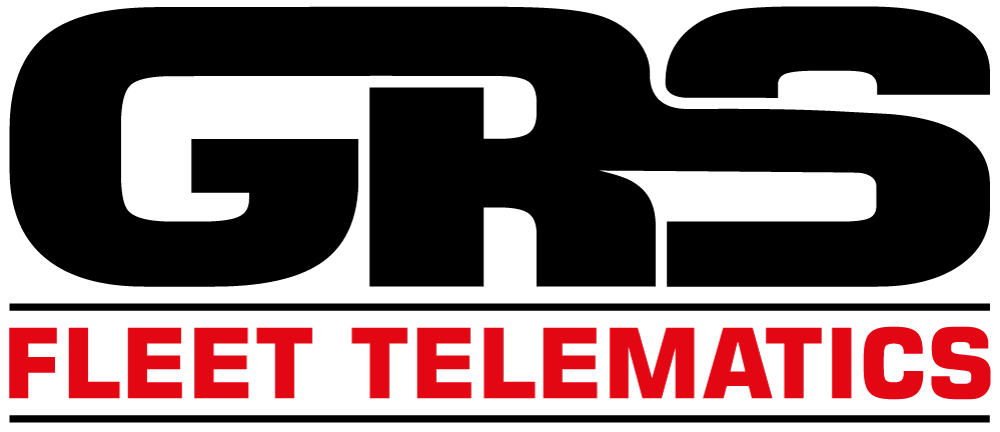Complete Guide to Fleet Efficiency: Leasing, Telematics & KPIs
Discover expert insights on fleet leasing, management tips, telematics, and KPIs to improve efficiency and reduce costs for your business.

For fleet operators, logistics managers, and business owners, managing a fleet efficiently can be a complex puzzle. Questions surrounding leasing versus buying, optimising operations, and keeping vehicles road-ready while ensuring cost savings often dominate decision-making. In this comprehensive guide, we break down expert insights from a fleet management discussion to help you transform your approach to fleet strategy.
Whether you're a small business just starting to expand your fleet or a seasoned logistics enterprise, this article will guide you through key considerations for enhancing fleet performance, reducing costs, and elevating your company's image.
Introduction: Why Fleet Efficiency Matters
Fleet management is more than just keeping vehicles on the road - it's about operational excellence, cost control, and maintaining a professional image. The vehicles you deploy represent your brand, while their reliability impacts employee morale, customer satisfaction, and profitability.
The central question for many fleet managers is how to balance quality, cost, and efficiency. Should you purchase or lease vehicles? How do you maintain them to avoid downtime? And how does telematics technology play a role in optimising operations?
This article unpacks these challenges and provides actionable advice to help businesses make informed fleet decisions.
Leasing vs. Buying: A Strategic Advantage for Fleets
One of the foremost questions for fleet managers is whether to lease or buy vehicles. While buying may seem like a straightforward option, leasing presents significant financial and operational advantages.
1. Financial Benefits of Leasing
- Tax Efficiency: Leasing allows businesses to take advantage of certain tax benefits, such as Section 179 deductions in the US or reduced sales tax in specific regions. For example, in some cases, vehicles over 12,000 GVW (gross vehicle weight) may qualify for additional tax exemptions when leased.
- Preserving Cash Flow: Leasing avoids the upfront capital expenditure associated with buying. This frees up cash for other investments, such as marketing, hiring, or technology upgrades.
- Cost Predictability: Lease agreements often bundle costs like maintenance and vehicle outfitting, providing a clear understanding of monthly expenses.
2. Operational Efficiency
Leasing accommodates fleet turnover at optimal times. Vehicles typically have a "sweet spot" for replacement, often before hitting 100,000 miles or nearing the end of their warranty. Holding onto vehicles too long increases the risk of costly repairs and impacts resale value. Leasing allows businesses to stay agile and replace vehicles before they become liabilities.
3. Enhancing Company Image
Professionalism is critical in service industries. Old, worn-out vehicles give an impression of neglect, while new, well-maintained fleets inspire confidence. Customers are more likely to trust a company that arrives in a modern, branded vehicle, particularly in competitive industries like home services.
The Role of Telematics: Optimising Operations Through Data
Telematics is revolutionising fleet management, offering real-time insights that help businesses improve efficiency, safety, and cost management. Here’s how telematics tools can shape your fleet strategy:
1. Predictive Maintenance
By integrating telematics with OBD-II sensors, fleet managers can monitor vehicle health and receive alerts for maintenance needs. This prevents unexpected breakdowns and ensures vehicles remain in optimal condition.
2. Driver Monitoring & Safety
Telematics systems track driver behaviour, including speeding, phone use, and stop sign compliance. Real-time alerts and feedback not only improve safety but also reduce accident-related costs and insurance premiums.
3. Fuel and Expense Tracking
Fuel card systems, like WEX, pair with telematics to prevent fuel fraud. By tracking mileage, fuel consumption, and location, businesses can identify anomalies, such as drivers filling up personal vehicles.
4. Downtime Monitoring
Downtime is a hidden cost that telematics can help manage. By tracking maintenance cycles and vehicle status in real time, businesses can minimise disruptions and ensure that spare vehicles are ready when needed.
Fleet Strategy: Best Practices for Maximising ROI
Fleet management isn’t just about vehicles - it’s about aligning your resources with business goals. Here are some key strategies to maximise your fleet’s efficiency:
1. Be Proactive, Not Reactive
Many businesses replace vehicles only when a major failure occurs. Instead, adopt a proactive approach by forecasting replacement needs 3–4 months in advance. This allows for factory orders, which are tailored to your specifications and often cheaper than purchasing from dealer inventory.
2. Holistic Leasing Solutions
Consider leasing programmes that offer turnkey solutions, including vehicle sourcing, outfitting, and branding. Bundling these services into your lease agreement saves time and money while ensuring consistency across your fleet.
3. Standardised Vehicle Upfits
Customising vehicles for specific roles, such as service or installation, improves efficiency. For example, adding wall panels to prevent interior damage or installing efficient storage systems can save technicians time and enhance organisation.
4. Leveraging Branding Potential
Vehicles are rolling billboards. Investing in high-quality, memorable wraps can significantly boost brand visibility. Bright, professional designs with clear contact information leave a lasting impression and help attract new customers.
Key Fleet KPIs: What to Track
Tracking the right key performance indicators (KPIs) ensures that your fleet remains aligned with operational goals. Here are the most critical metrics to monitor:
- Total Operating Costs: Break down costs into maintenance, fuel, leasing, and depreciation.
- Downtime: Measure the time vehicles are out of service to identify potential inefficiencies.
- Fuel Efficiency: Monitor miles per gallon to identify underperforming vehicles or risky driving behaviour.
- Driver Behaviour: Use telematics to track speeding, idling, and unsafe practices.
- Fleet Age and Resale Value: Stay ahead of depreciation curves by tracking vehicle age and mileage.
The Human Factor: Morale and Productivity
Fleet management isn’t just about numbers. Vehicles are also workplaces for your team. Providing reliable, modern vehicles boosts employee morale and productivity. Happy employees are more likely to deliver exceptional service, and their vehicles play a significant role in shaping customer perceptions.
Drivers often take pride in well-maintained vehicles, treating them with care. On the other hand, assigning worn-out or unreliable vehicles can lead to frustration and higher turnover rates. Investing in a modern fleet is an investment in your workforce.
Emerging Trends: The Future of Fleet Management
1. Electric Vehicles (EVs)
While EVs present an opportunity for cost savings through government incentives, challenges remain. Limited infrastructure, battery performance under heavy payloads, and environmental factors like extreme weather can restrict adoption in certain industries. However, advancements in technology and infrastructure may make EVs a more viable option in the coming years.
2. Artificial Intelligence (AI)
AI is beginning to play a role in fleet management by analysing data to predict maintenance needs, optimise routes, and identify cost-saving opportunities. Expect AI-driven systems to become more prevalent as they integrate with telematics platforms.
Key Takeaways
- Leasing Advantages: Leasing provides significant tax benefits, preserves cash flow, and ensures vehicles are replaced at the optimal time.
- Telematics Integration: Use telematics to monitor vehicle health, driver behaviour, and fuel expenses, reducing downtime and operational costs.
- Proactive Management: Plan fleet replacements 3–4 months in advance to secure better options and pricing.
- Employee Morale: New vehicles boost driver morale and customer confidence, directly impacting service quality and revenue.
- Branding Opportunities: High-quality vehicle wraps are an investment in brand visibility and professionalism.
- KPI Tracking: Monitor costs, downtime, and driver behaviour to make data-driven decisions.
- Emerging Trends: Prepare for the future with electric vehicles and AI integration, but evaluate readiness based on your specific operations.
Conclusion
Fleet management is a dynamic and crucial component of operational success. By leveraging leasing solutions, integrating telematics, and adopting proactive strategies, businesses can optimise their fleets for efficiency, cost savings, and professionalism. Whether you're scaling up or maintaining an existing operation, aligning your fleet strategy with modern best practices ensures long-term success.
Fleet management isn’t just about vehicles - it’s about driving growth, safeguarding assets, and delivering exceptional customer experiences. By adopting these insights, your fleet can become a competitive advantage for your business.
Source: "Maximizing Fleet Efficiency: Insights from Industry Expert Renee Millum | E428 Home Service Expert" - Home Service Expert, YouTube, Aug 11, 2025 - https://www.youtube.com/watch?v=QHU3doqCWBc
Use: Embedded for reference. Brief quotes used for commentary/review.
